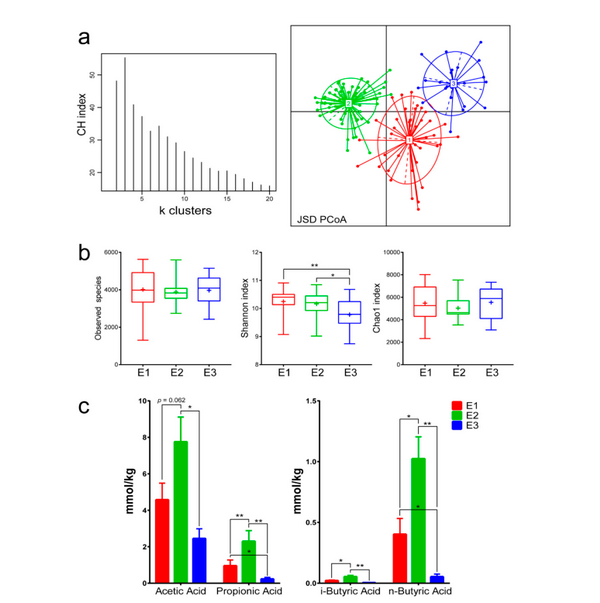Animal gut microbiomes can be clustered into “enterotypes” characterized by an abundance of signature genera. The characteristic determinants, stability, and resilience of these community clusters remain poorly understood. We used plateau pika (Ochotona curzoniae) as a model and identified three enterotypes by 16S rDNA sequencing. Among the top 15 genera, 13 showed significantly different levels of abundance between the enterotypes combined with different microbial functions and distinct fecal short-chain fatty acids. We monitored changes in the microbial community associated with the transfer of plateau pikas from field to laboratory and observed that feeding them a single diet reduced microbial diversity, resulting in a single enterotype with an altered composition of the dominant bacteria. However, microbial diversity, an abundance of some changed dominant genera, and enterotypes were partially restored after adding swainsonine (a plant secondary compound found in the natural diet of plateau pikas) to the feed. These results provide strong evidence that gut microbial diversity and enterotypes are directly related to specific diet, thereby indicating that the formation of different enterotypes can help animals adapt to complex food conditions. Additionally, natural plant secondary compounds can maintain dominant bacteria and inter-individual differences of gut microbiota and promote the resilience of enterotypes in small herbivorous mammals.

Figure 1. Identification of enterotypes in pika. (a) Calinski-Harabasz (CH) indices for a number of enterotypes and principal coordinate analysis (PCoA) analysis based on Jensen–Shannon distance (JSD) dissimilarity. (b) Alpha diversity (observed species,Shannon index, and Chao1 index) of the three enterotypes. Differences were assessed by the Kruskal–Wallis test and denoted as follows: * p < 0.05; ** p < 0.01. (c) Four major short-chain fatty acids (SCFAs) (mean ± SE) of the three enterotypes.Differences were calculated by one-way analysis of variance (ANOVA) and are denoted as follows:* p < 0.05; ** p < 0.01.
This result was published in Microorganisms with the title of “Enterotypes of the Gut Microbial Community andTheir Response to Plant Secondary Compounds in Plateau Pikas”.
The link below will guide you to the reading:
